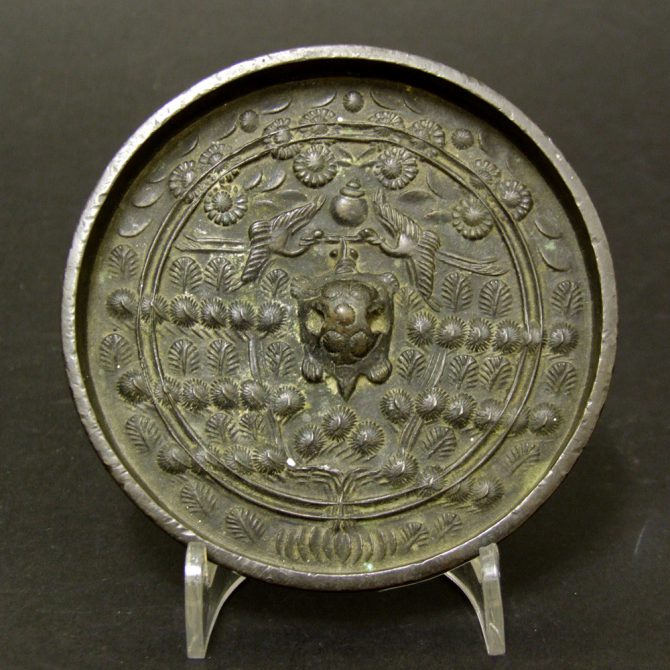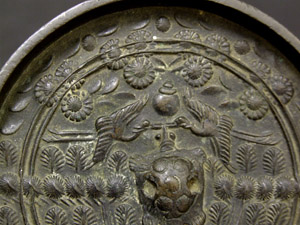
MING DYNASTY 1368 – 1644 Ming Bronze
A Chinese Bronze Mirror, Ming Dynasty 1368-1644. Cast Showing a Pair of Cranes Above Plants with a Tortoise in the Center.
SOLD
- Condition
- In very good condition.
- Size
- Diameter : 10.5 cm (4 inches)
- Provenance
- N/A
- Stock number
- 22619
Information
The tortoise boss in the center of the mirror represents the center of the universe, the upper shell being the heavens, the lower shell represents the earth. The boss is pierced to take a cord to attach the mirror to a waist band.
Chinese Bronze Mirrors :
The first bronze mirrors appear in China during the Warring States Period (475-221 B.C.) or earlier. Their basic form altered little over the centuries, comprising of a circular disk of metal with a highly polished surface on one side. Coatings were sometimes added to give the impression of silver, the most reflective metal to be used for mirrors. Using the right metal to achieve a highly reflective surface was an important challenge, and the art of the mirror polisher was important, it is thought that fired pottery might have been used to polish some mirrors. The reverse side was decorated, and the central raised boss was pierced to take a ribbon or cord to attach it to clothing. But Chinese painting show wooden stands used for mirrors, so they could be mobile or used in a static position on a piece of furniture. Bronze stand also exist. During the Han Dynasty (206 B.C.–220 A.D.) mass-production was introduced and the well known `TLV` mirrors were invented. The design included geometric patterns that look rather like the letters TLV. Possibly the most important era for the production of bronze mirrors was the Tang Dynasty (618-906) were exotic subjects such as lions and grapes were depicted in high-relief. The Song Dynasty saw the introduction of mirrors with handles but circular, square and other forms of mirror were made. It was during the 19th century that Western style glass mirrors started to replace the traditional bronze mirror in China.
